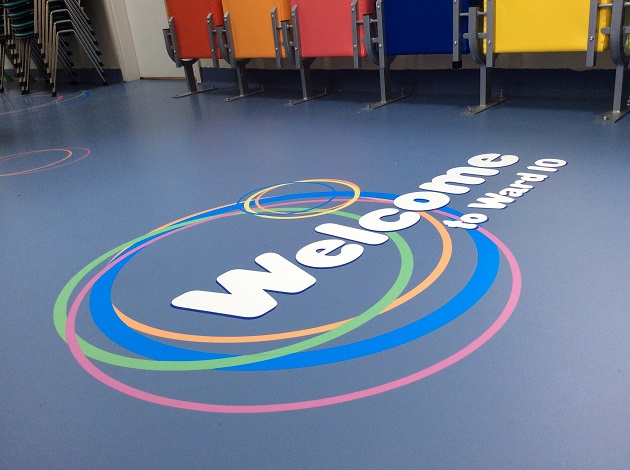Around 80% of infectious diseases are spread by personal contact or touching a contaminated surface.
And as a single bacterium can multiply to over four million in just eight hours; it is clear that keeping surfaces clean is critical to breaking the chain, particularly in high-risk environments such as hospitals and care homes.
To address this, manufacturers are coming up with increasingly-effective and easy-to-use products that are offering a first line of defence for healthcare cleaning teams.
It is clear that the sector now has a wider choice of products with which to implement highly-effective infection prevention strategies to protect the lives of patients and those who care for them
Tinaz Ranina of Diversey said: “It is clear that the sector now has a wider choice of products with which to implement highly-effective infection prevention strategies to protect the lives of patients and those who care for them.”
Cleaning professionals have traditionally chosen disinfectants with chlorine as the active ingredient - usually as bleaches - for the treatment of hard surfaces.
Tristel is best known for its chlorine dioxide wipes, but it recently launched Cache; a range dedicated entirely to surface disinfection.
Hot shot
Products include HOT SHOT, a dual-compartment burstable capsule for the generation of 500ml chlorine dioxide working solution.
One HOT SHOT can disinfect an entire patient bedspace, meaning hospitals can eliminate the use of single-use plastic wipes, making a significant financial saving and reducing waste.
But the past few years have seen a shift away from using solely chlorine-based solutions within healthcare settings, as Accelerated Hydrogen Peroxide (AHP) becomes more popular.
Diversey’s Oxivir range is an example of this.
Ranina said: “The key requirement from any disinfectant in healthcare settings is efficacy; to prevent the introduction of potentially-harmful pathogens and infections.”
Importantly, contact times must be short so that pathogens are killed before the surface dries.
Acting quickly
But many chlorine-based products can take up to 30 minutes and are only effective while wet.
The key requirement from any disinfectant in healthcare settings is efficacy; to prevent the introduction of potentially-harmful pathogens and infections
In contrast, many AHP solutions disinfect as they dry.
“Disinfectants containing AHP have been tested and shown to kill viruses such as Norovirus in up to 30 seconds, and the most-persistent spores such as C. diff in one minute,” said Ranina.
“This is one of the reasons why this type of disinfectant was the product of choice at hospitals and care homes during the Ebola virus outbreak in 2014.”
She added: “With more cleaning taking place while patients are present, processes must be safe and efficient, so as not to create an unpleasant environment or put patients at risk.
“AHP degrades to oxygen and water alone shortly after use, which helps make formulations containing it safer to use.”
Another emerging tool utilises ultra-violet type C (UV-C), avoiding chemicals altogether.
It works by disrupting the DNA of pathogens, which prevents them from causing infections.
The systems can disinfect large areas quickly and are ideal for settings where traditional chemical cleaning is cumbersome and complex, such as where lots of equipment is present.
For example, Moonbeam3 from Diversey delivers a powerful UV-C light to provide fast broad area disinfection of high-touch surfaces in as little as three minutes; much faster than fogging, and almost twice as effective as traditional cleaning and disinfection alone in destroying the pathogens that cause healthcare associated infections (HCAIs).

One of the key surfaces to disinfect within a healthcare environment is the flooring
Taking to the floor
Flooring is a particularly high-risk surface and as such requires special attention.
Sam McNaughton, technical services advisor at Sika Flooring, explains that, not only are the cleaning products used important, but the choice of material itself should also be carefully considered.
He told BBH: “The main consideration for hospitals and care homes is to choose a floor that is easy to clean and this is best achieved with the specification of seamless flooring.
With more cleaning taking place while patients are present, processes must be safe and efficient, so as not to create an unpleasant environment or put patients at risk
“Seams in flooring are areas where dirt can easily be picked up and stored, ultimately harvesting bacteria and mould.
“This, in a hospital environment, is a big issue because as little as 10 bacteria cells can cause illness. Therefore, a seamless, easy-to-clean floor eliminates and helps to prevent such build-ups.”
On cleaning, he adds: “The surface profile of a floor will impact on the type of cleaning regime.
“For example, a smooth floor will be far easier to clean compared to a broadcast aggregated finish as the dirt pick-up will be minimal in comparison.
“Therefore, it depends on the hospital or care home’s requirements.
“If, for instance, they need a floor that conforms to the HSE slip-resistance guidelines (SRV/PTV >36 in both wet and dry) then they will have to balance that with the ease of cleaning.
“Broadcast aggregated flooring systems use a range of different quartz grain sizes - the greater the quartz size, the more chance the floor will pick up and retain dirt. This will make the surface harder to clean.”




